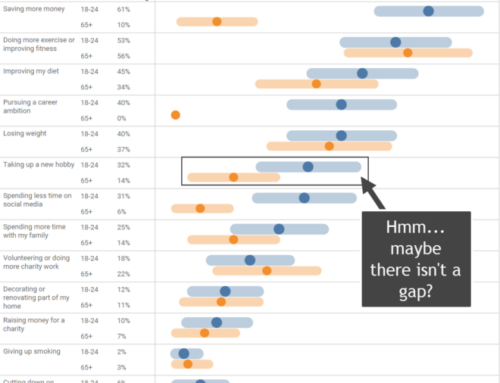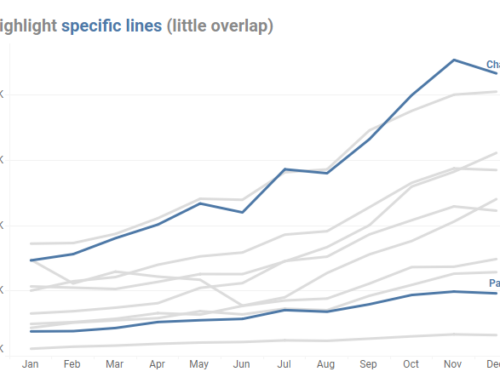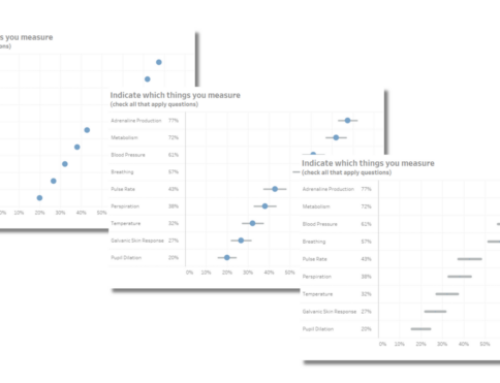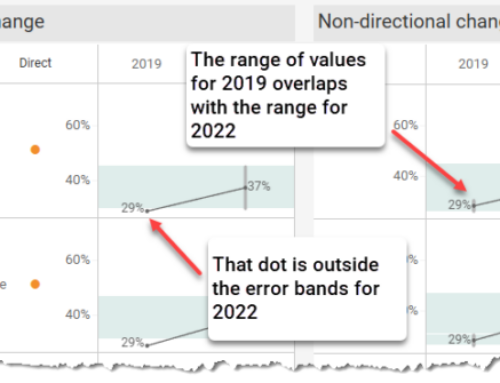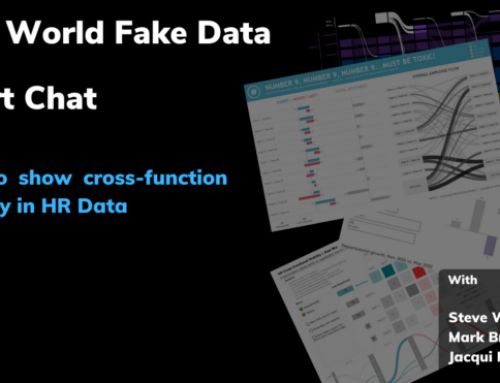“With great power comes great responsibility”
— Voltaire
— Benjamin Parker (Uncle Ben from Spiderman)
Overview
Recently both Ryan Sleeper and Andy Kriebel blogged about donut charts in Tableau.
While both of them cautioned about where, when, and how best to use them, I fear many people will ignore the warnings and dig into this sugary, analytically-impoverished chart type and start creating stuff like this.
Yuk.
And what fuels my fear? Ryan and Andy do great work, and they write great blogs. They rightfully have a lot of influence in the Tableau community.
But with great power — and influence — comes great responsibility and I suspect that some people will see Ryan and Andy’s work, ignore their recommendations, and apply the following bit of “logic”:
Ryan Sleeper is a Tableau Iron Viz champion and really cool — and he makes donut charts.
Andy Kriebel is a Tableau Zen master and really cool — and he, too, makes donut charts.
I want to make cool vizzes and be really cool; therefore, I should make donut charts.
[Insert face palm here]
Interviewer: So, what do you have against donut charts? Don’t you think they look cool?
Me: My problem is that donut charts don’t tell you very much.
Interviewer: Yes, but they look cool!
Me [yelling]: You know what else looks look cool? Pictures from the Hubble telescope. Vintage electric basses. Three-dimensional pie charts! Should I festoon my dashboards with these images, just because they look cool?
Interviewer: Fine, explain to me why this chart types doesn’t work, but I’d like to see an alternative that isn’t BOR-ING!
Me: Okay, allow me to do the following:
- Explain why donut charts don’t tell you much (or not as much as a bar chart)
- Present a better alternative
- Show how to have your cake (not your donut) and eat it, too
Why donut charts don’t tell you much
Consider the chart in Figure 1, above.
I always recommend that people ask the following questions when coming up with a visualization:
- Do I need different colors?
- Do I need a legend?
- Do I need measure labels?
Let’s see what happens when we remove the measure labels:
The chart does pass some of the “can I figure this out test”. For example, it’s easy for me to see that West is around one quarter of the way to goal and that East is a little more than half way. Where the chart fails is with comparison among regions. For example, can you tell how much closer North is to its goal than West? This comparison is particularly hard to determine as it’s very difficult to gauge how much longer one arc is than another arc.
A better alternative
I think a bar chart with a goal line is easier to grok. It tells me more and takes up less screen real estate, too.
There’s an added advantage in that I can easily see both the progress towards a goal and that the goal is $100,000.
Better yet, suppose the goals were different for each region? Right now they each have a shared goal of $100,000 but suppose the goal for North is $125,000 and the goal for East is $75,000? With the donut chart, how will you show the actual goal and the progress towards the goal at the same time?
Why is it easy to compare progress across regions using the bar chart? I’ve discussed this in length here, but the bottom line is that humans are much better at judging the length of bars than they are judging the area of circles or the lengths of arcs.
But does the chart pass the “no measure labels” test? Have a look.
While I prefer having labels, it’s pretty easy for me to the following:
- North is more than twice as long as West
- East is a little more than half way
- South is more than a third of the way to goal
- East is about twice as long as West
In other words, I can draw conclusions more easily from this chart than the donut chart.
Another Example
Consider the chart below that shows the percentage of confirmed judicial nominees that are women, broken down by president.

Figure 6 – Donut Chart showing Female Judicial Nominees (source: Alliance for Justice)
There are some good stories in here but they are buried. Compare this with a bar chart that contrasts the different presidents and underscores the differences between Republicans and Democrats.

Figure 7 — Bar Chart showing Female Judicial Nominees (source: Alliance for Justice)
I think this is a lot clearer.
But it is, well, boring.
Have your cake and eat it, too
I admit that most of my practice has me building stuff that looks more like it would appear in The Economist than in USA Today, but I do understand that you may need to create something that is eye catching.
And I agree that the donut chart is eye catching, but I hate to sacrifice information for the sake of decoration.
Is there a way to get both?
I think there is. Let’s work on the first example where we were examining progress towards a goal broken down by region.
Want some sugar? Try a lollipop chart
Creating a lollipop chart is easy in Tableau. You create a dual axis chart where both measures are identical but you have a different chart type (in this case a bar chart combined with a circle chart).
Try some fun shapes
We can also take the lollipop chart and dress it up with a custom shape, like the one shown below.
While I prefer the lollipops to the runner, I have no problem with the chart shown above because I don’t have to work hard to see both the distance from the goal and to compare among regions. That is, I did not fight Tableau’s suggested default chart type but instead took it and dressed it up a bit.
Conclusion
 Even if you are tasked with having to create visualizations for mass public consumption I urge your to use caution before creating a donut chart. I understand that you may need something that is more visually arresting than a simple bar chart, but take that as a challenge: find a way to make something that looks cool but does not sacrifice one bit of analytical clarity.
Even if you are tasked with having to create visualizations for mass public consumption I urge your to use caution before creating a donut chart. I understand that you may need something that is more visually arresting than a simple bar chart, but take that as a challenge: find a way to make something that looks cool but does not sacrifice one bit of analytical clarity.
And if you do create a donut chart, please look carefully at what Ryan and Andy did (and did not do) in fashioning theirs.









